Lee Kong Chian Natural History Museum
We’re all big fans of the cool exhibitions at the ArtScience Museum and National Museum of Singapore. But apart from interactive art installations and aesthetic displays, there’s more to discover from museums in Singapore. Think huge dinosaur fossils and natural history specimens from the whole of Southeast Asia – it’s like having your very own Night At The Museum.
Well, the animals don’t come to life after dark but the Lee Kong Chian Natural History Museum is the only natural history museum in Singapore. If this piqued your interest, here’s everything you need to know to make the most of your time there:
Over 2,000 specimens in 16 thematic zones
Visitors can easily spend about 2.5 hours exploring the museum since there are 16 different themed zones split between 2 floors to admire. Apart from viewing over 2,000 preserved specimens, you’ll get the chance to learn how every exhibit contributes to our biodiversity.
Biodiversity Gallery – 3 giant dinosaur fossils
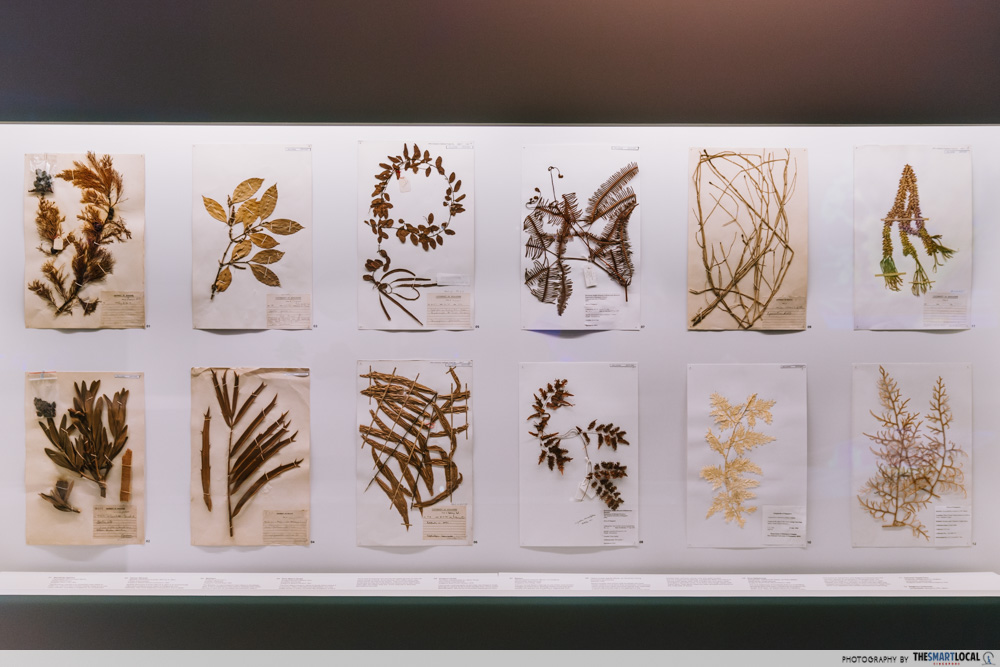
Herbarium sheets of various preserved plant specimens.
Your path in the museum starts at the Biodiversity Gallery, specifically at the Plants zone that features everything plants. From dried out plants on display to real-life models of the world’s largest flower, the Rafflesia, you’ve got plenty to look at while reading up on them to find out more.
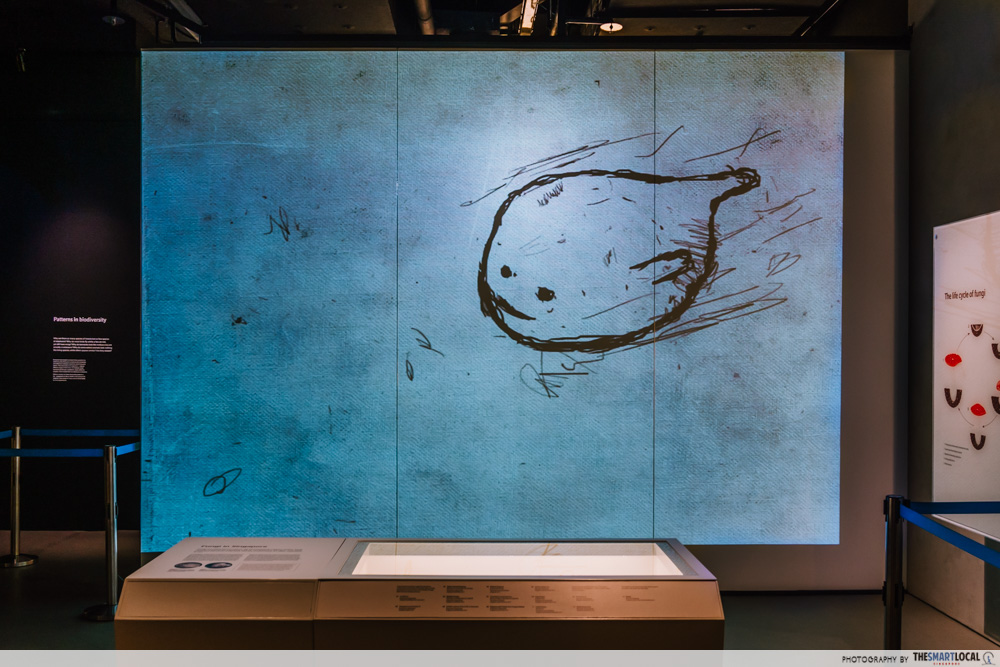
There’s even a screening that shows the evolution of life, through a cute minute-long animation visitors can watch when they’re walking towards the next zone.
At this point, you’ll probably stop in your tracks as you witness 3 huge dinosaur fossils in their entirety right in front of you – almost anyway.
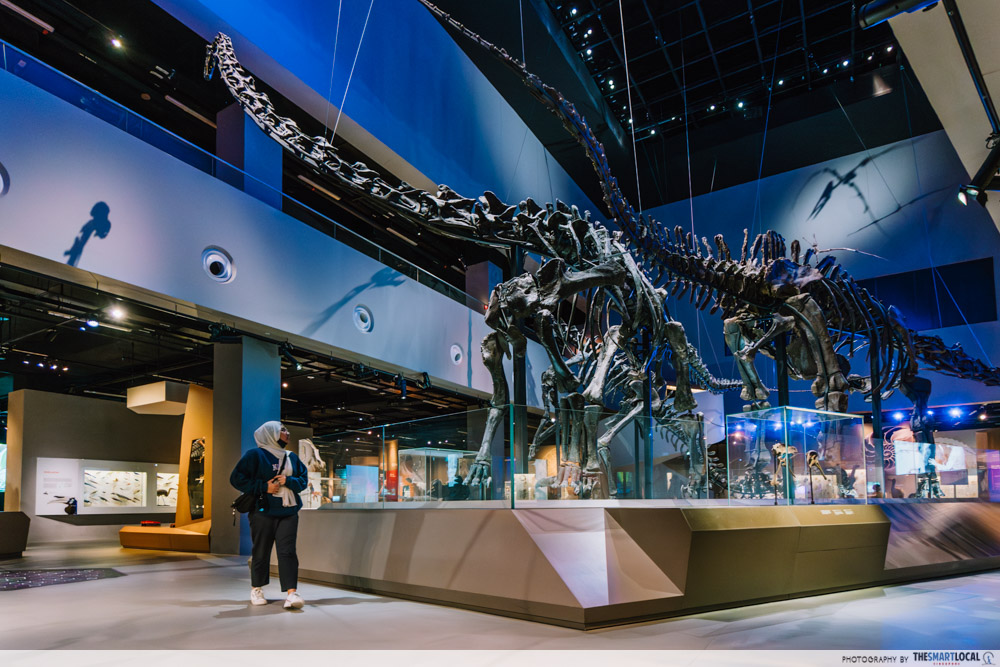
These are diplodocid sauropod fossils which have been named Prince, Apollonia, and Twinky. Each dino is about 80% complete, which is quite rare for dinosaur fossils. If you’re lucky enough, you may be able to catch the light show that loops every few minutes and forms cool dinosaur shadows on the surrounding walls.
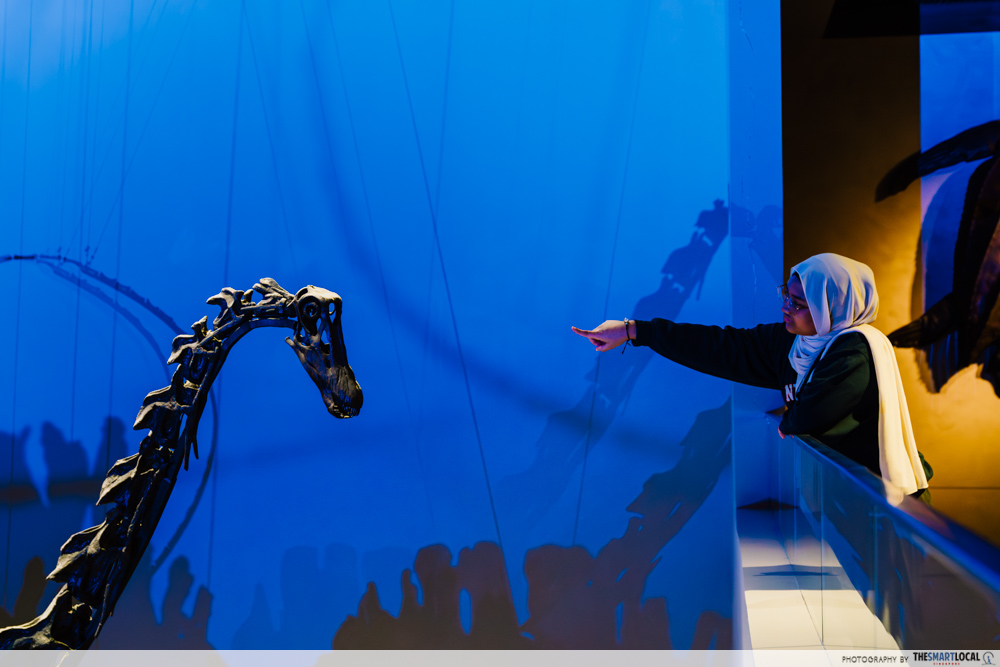
Climb up to the 2nd floor to get a top-down view of the Dinosaur exhibition.
The next zone that’ll capture your attention is the Arthropods zone – it’s got insects, anthropods, and crustaceans in all shapes and colours. We’re talking butterflies, beetles, and scorpions spread out in a glass case.
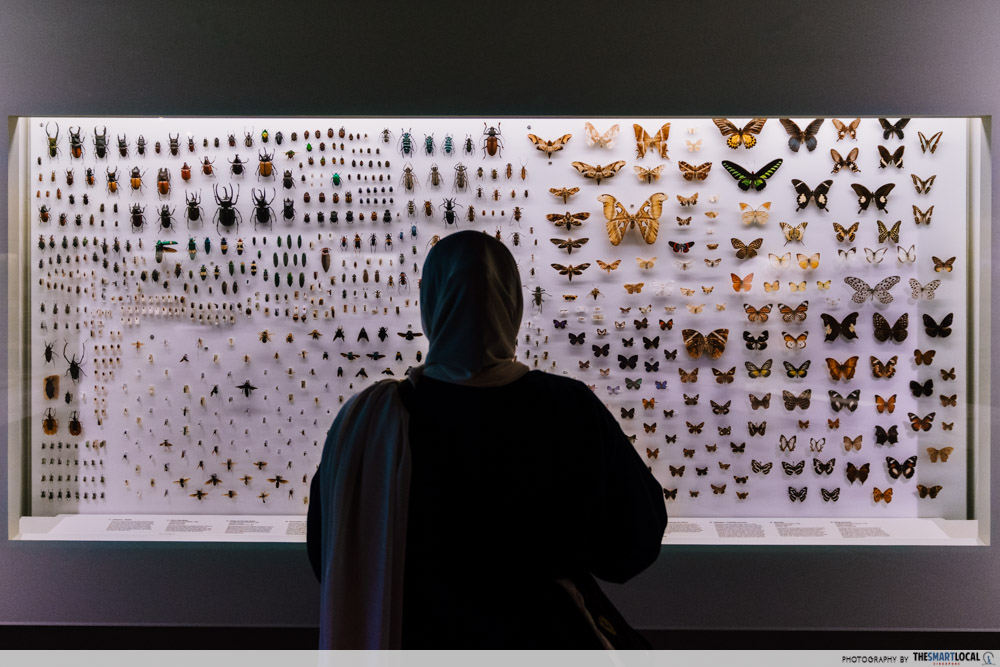 For those afraid of insects – avoid the Arthropods zone at all costs.
For those afraid of insects – avoid the Arthropods zone at all costs.
Just behind you are the Reptiles and Amphibian zones with another round of interactive exhibits. There’s some mini compartments here with informative posters you can pull out to read such as on frogs and their natural habitat. Or if you’re more of a visual learner, observe some cool reptile structures and don’t forget to snap a pic as a momento.
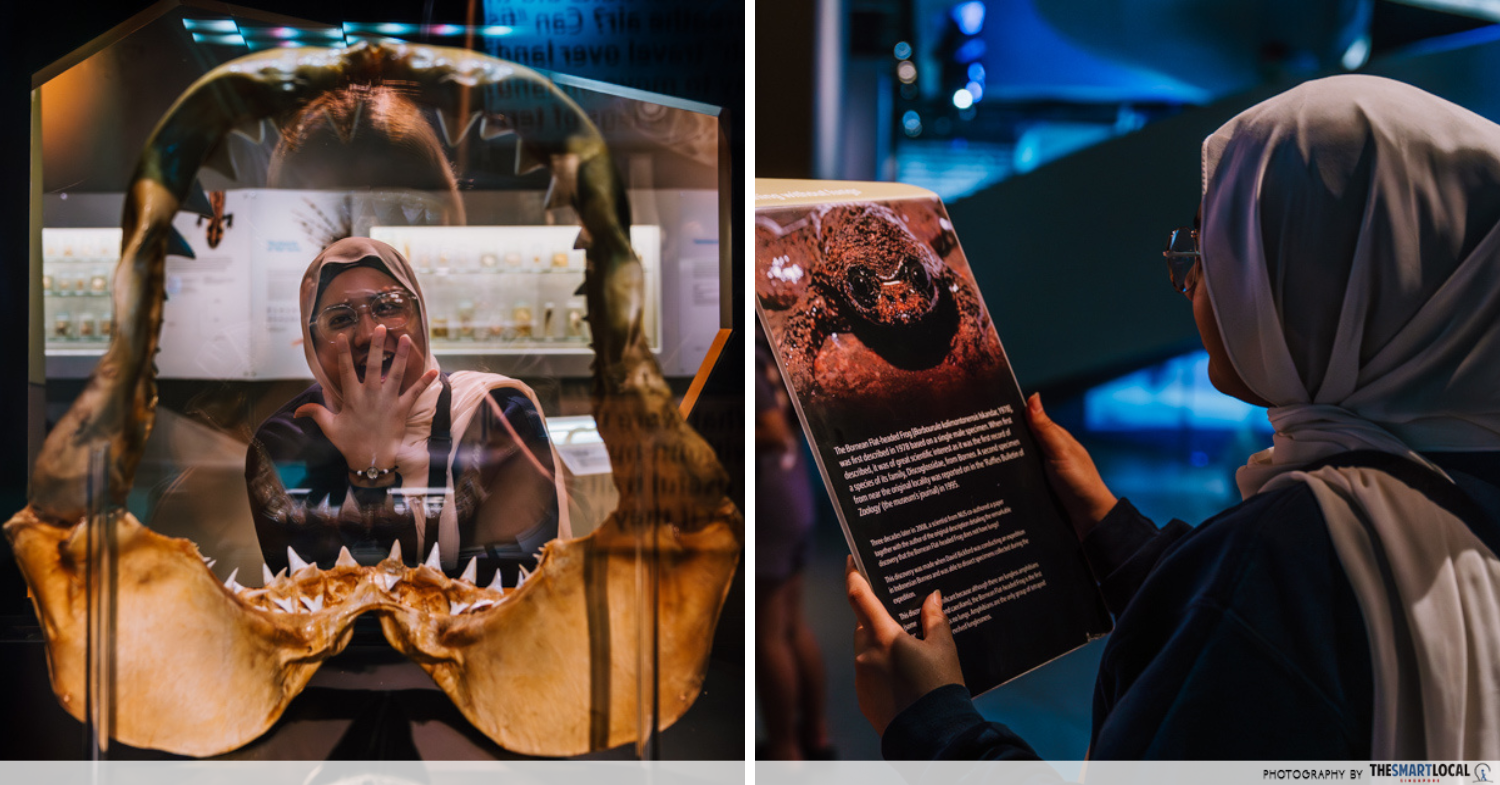
Pose at the Fish zone or learn more at the Amphibian zone.
The reptiles corner has got another surprise – crocodiles. And tons of them. Don’t worry though because they’re not alive, but the taxidermies could fool anyone, and they do make a good photo spot.
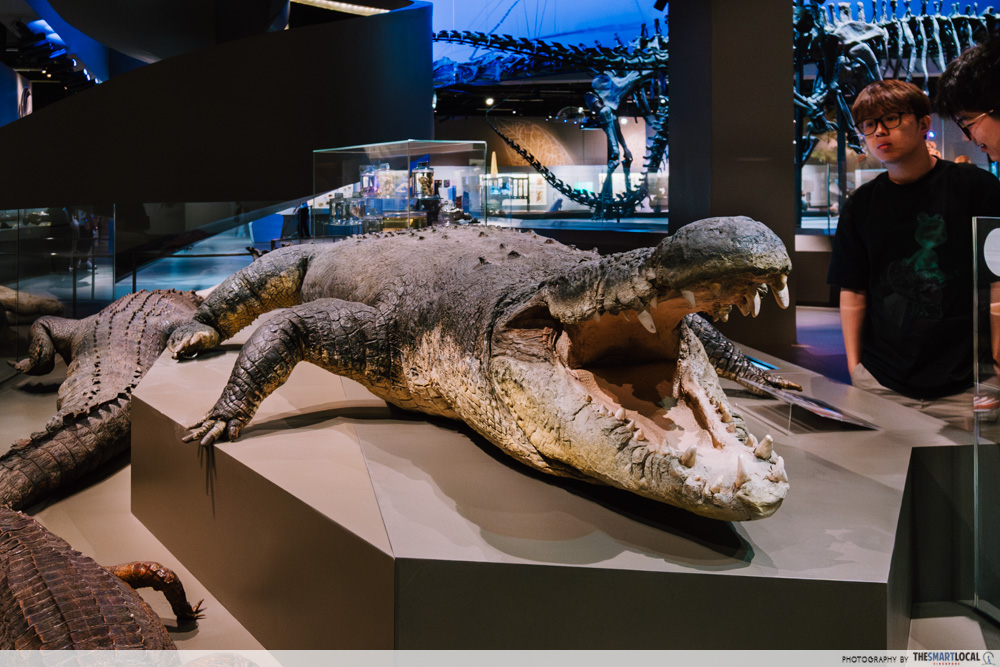
Crocodile specimens.
Onto the next zone, Marine Cycles. Just like its name suggests, this zone showcases creatures that dominate our oceans. You definitely can’t miss the mega-sized fish specimens that take centre stage of the room, or the “water” gallery that displays multiple sea creatures.
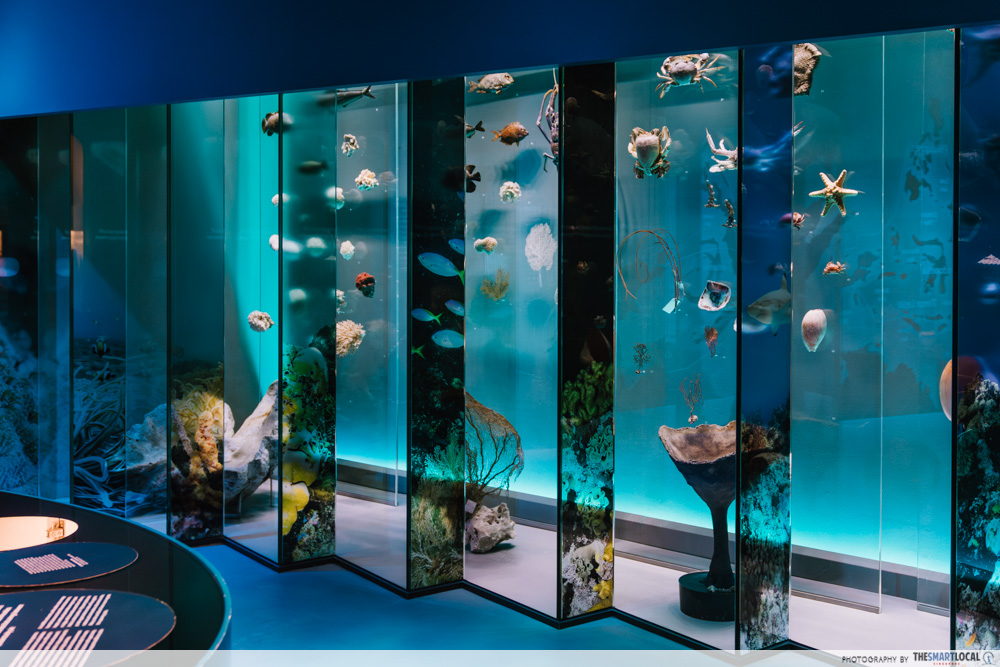
The Marine Cycles zone has a “water” gallery & other interactive features like videos to watch.
At the last and final zone AKA the Mammals zone, you can expect, well, mammals. But not just your usual orangutan and leopard on display; the space boasts a 2.7m-long narwhal’s tusk and even a Dugong’s skeleton.
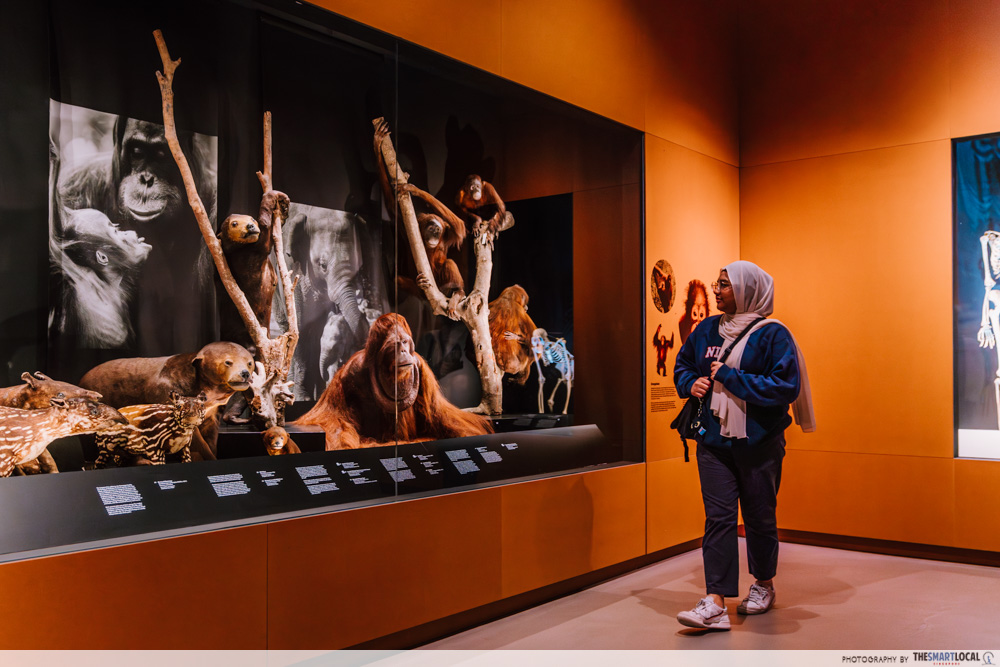
BTW, they’ve got more skeletal visuals out in the front, one of them being the Jubilee Singapore Sperm Whale. The whale spans 10.6m-long and washed up to the shoreline of Jurong Island as the nation celebrated its Jubilee year, hence its cute nickname. And just right beside it is a huge elephant skull, that you can touch and get up-close to.
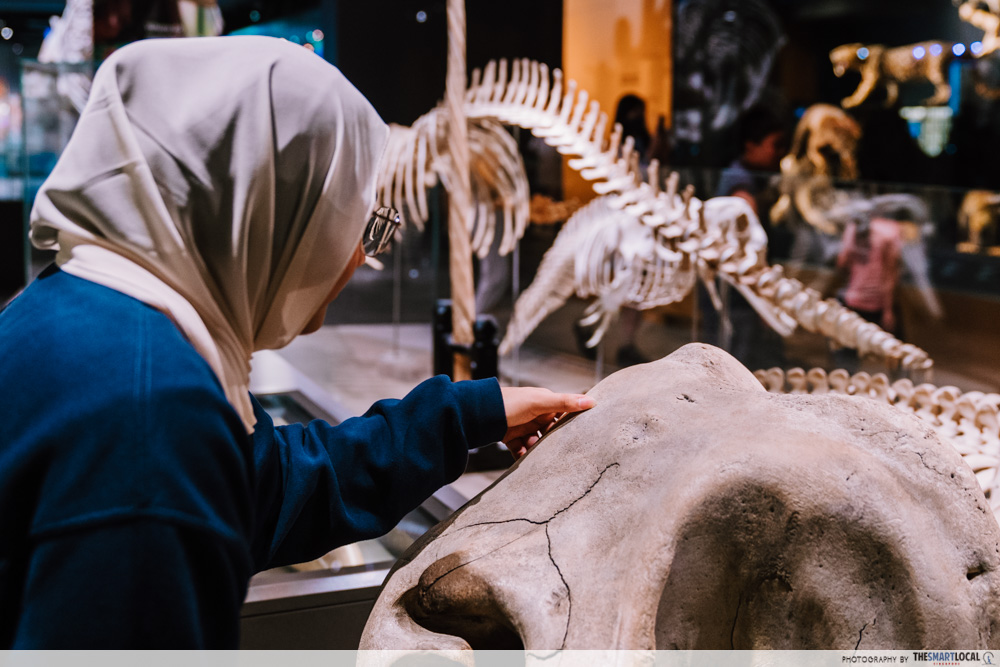
Heritage Gallery – Artefacts dating back to the 1800s
Once you head up to the 2nd floor, you’re immediately introduced to the Heritage Gallery, or the OG collection. The collection in this gallery goes all the way back to the 1800s, when it used to be part of the former Raffles Library and Museum.
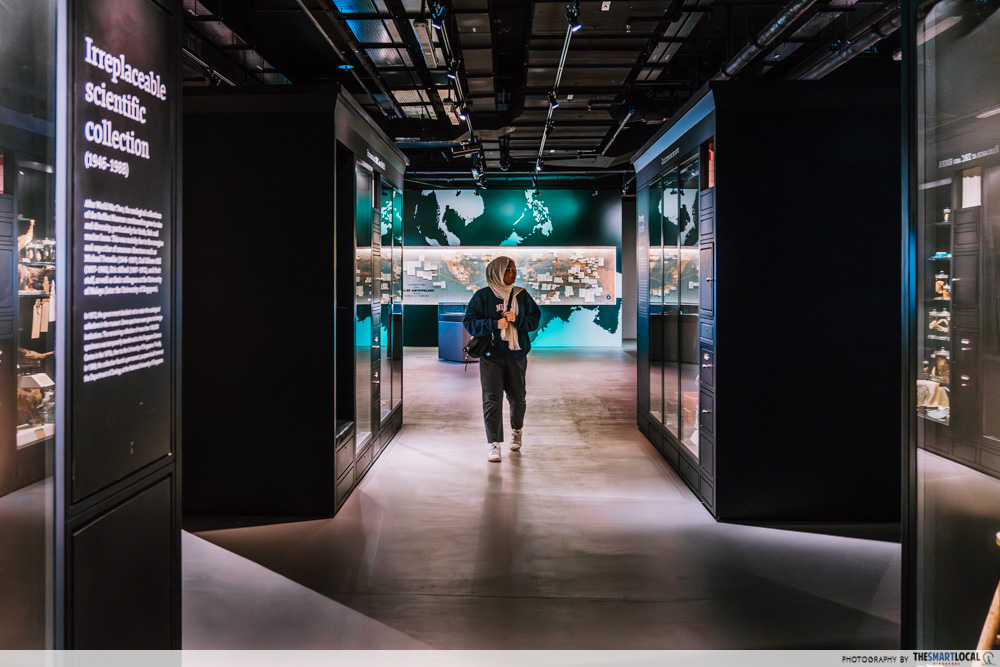
It’s like walking through an encyclopedia with lots of interesting information to soak in while getting a good look at the specimens stored in the bookcase-like displays.
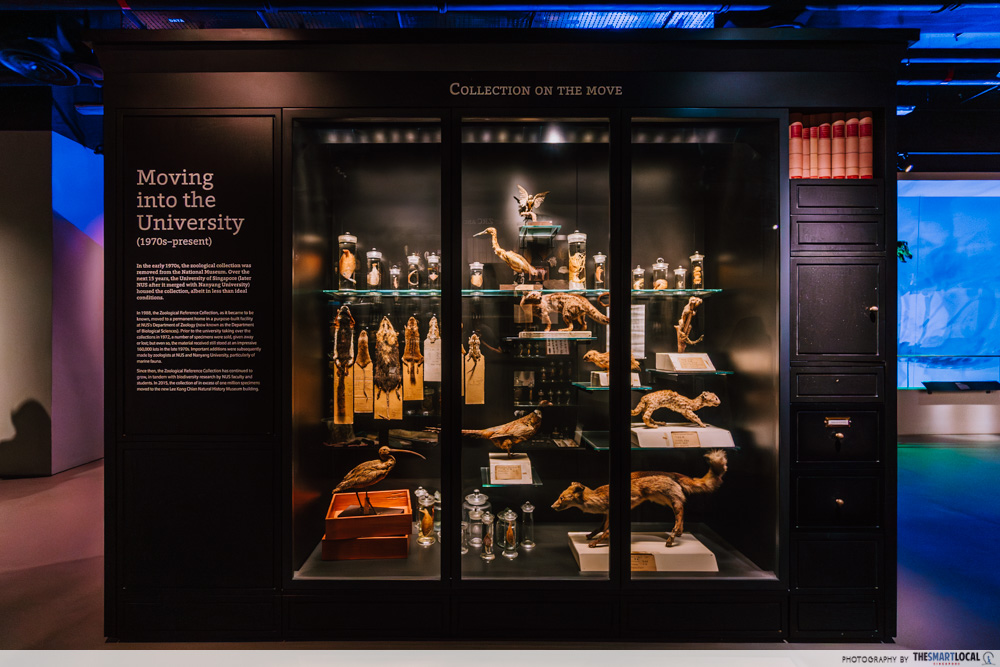
There’s a whole chunk of paragraphs on each showcase giving an overview of each collection, but to really get into the nitty gritty details, try opening the cabinet drawers. They’ve got some cards you can flip over to get more deets on the exhibits.
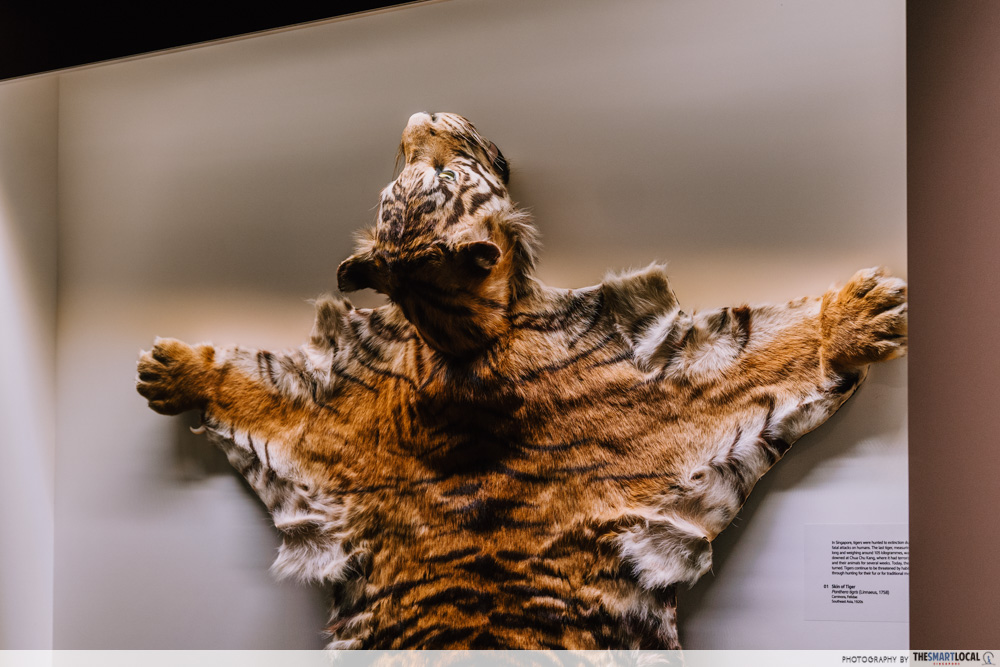
One of the main highlights here is the display titled “Skin of Tiger”. This tiger species used to roam wild hundreds of years ago but the last one of its kind was seen in the 1930s before it officially went extinct in Singapore. So, you’d want to take a good look at the preserved tiger right here since you can’t find it anywhere else.
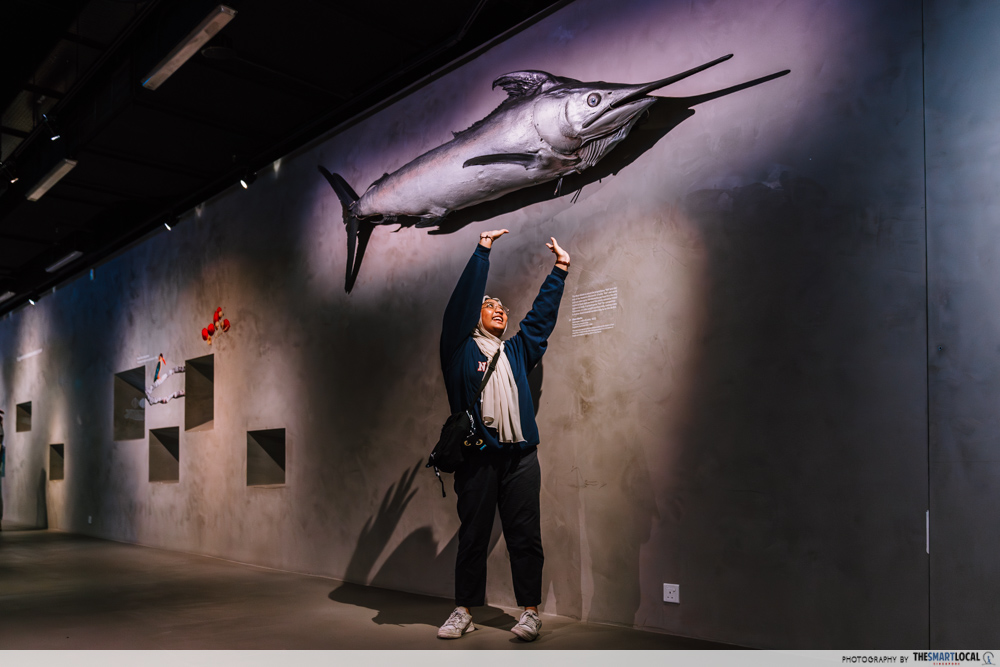
And of course, what’s a museum without an eye-catching exhibit? The giant Black Marlin display here definitely makes for a nice backdrop, so whether or not you’re posing for the ‘Gram, just remember to snap a pic.
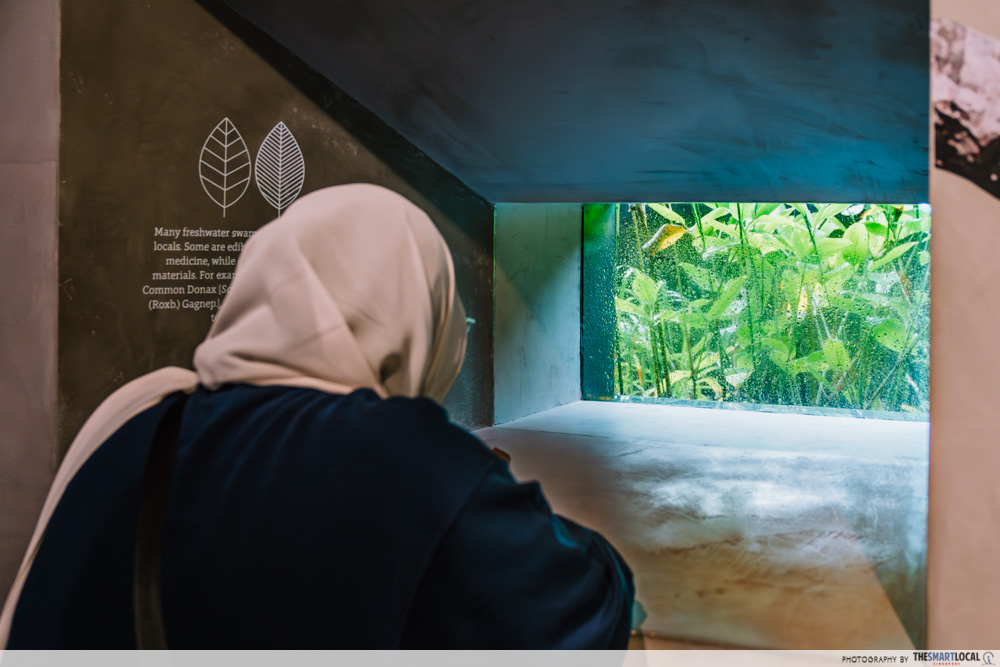
If you walk past that same wall, you’ll also see some carved-in areas for visitors to look through to get a view of the real mangroves and plants outside.
Rooftop garden & outdoor plant exhibits
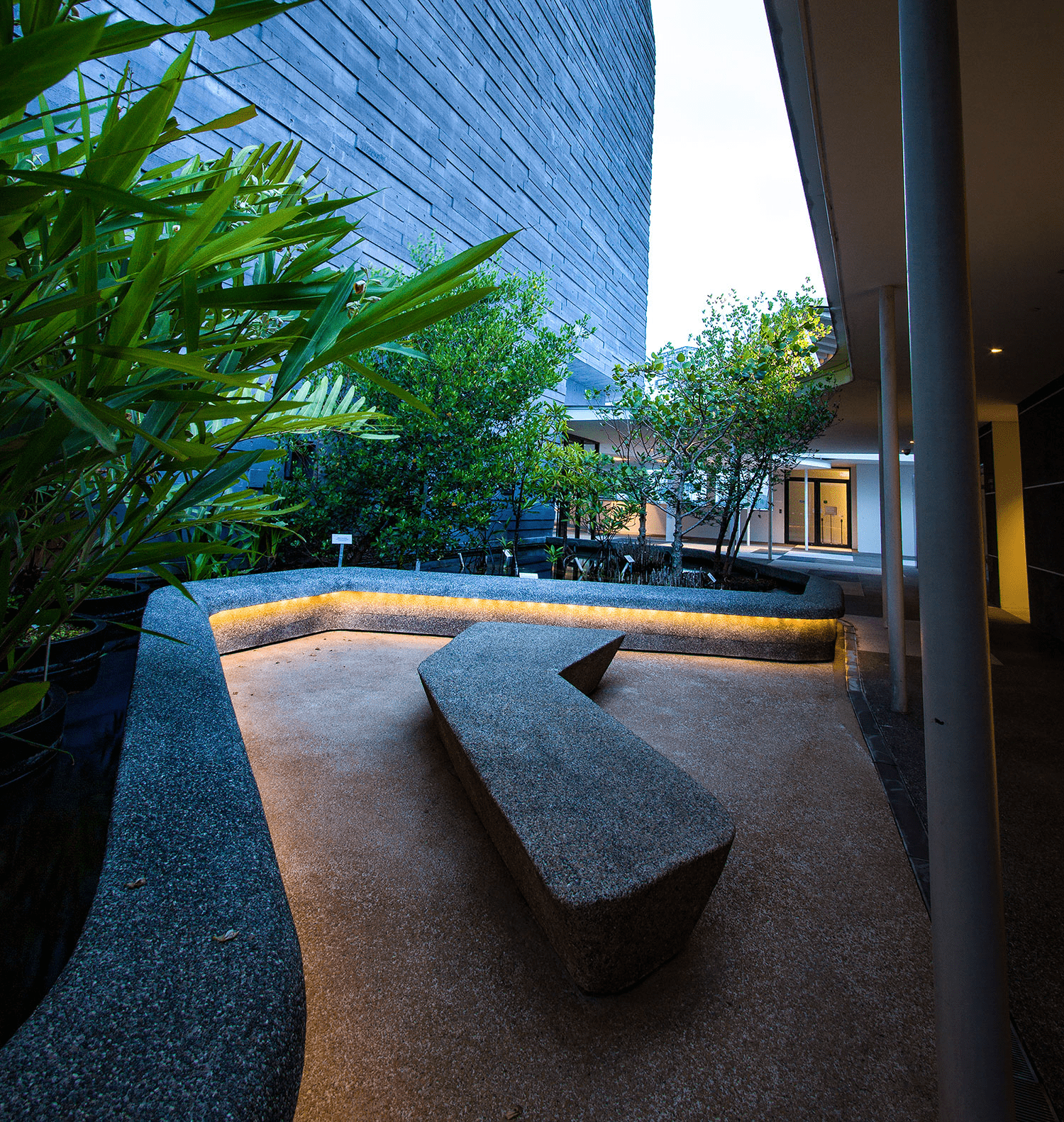 Image credit: NParks
Image credit: NParks
While the contents of the museum is quite the hype, its outdoor mini garden is just as unique. It’s got mangroves that actually grow there while adding some greenery to the area.
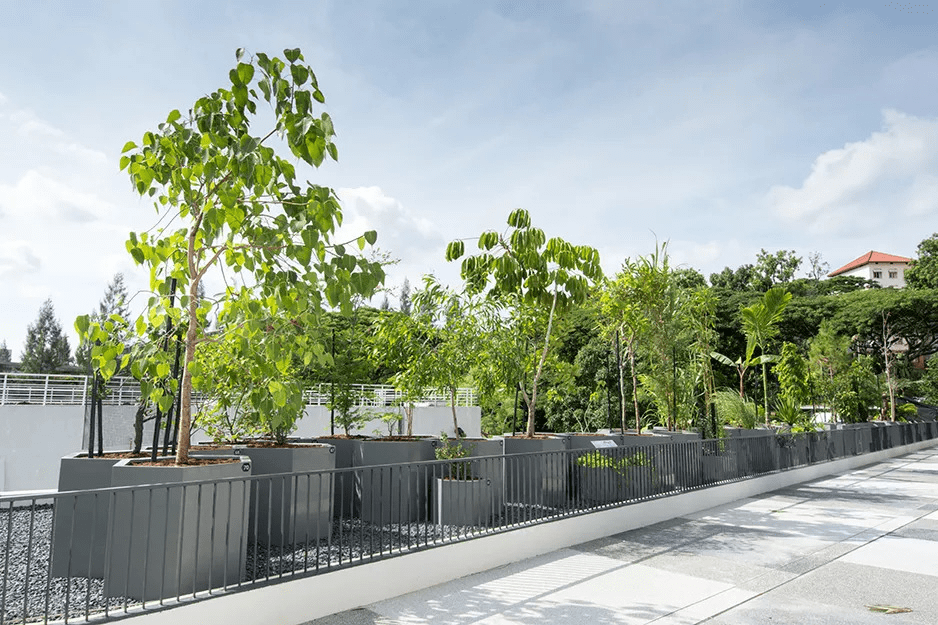
Image credit: National University Singapore
Slightly further down, there’s a phylogenetic garden that’s used as a visual guide to show visitors the evolution of different plants. This includes smaller forest plants like moss and algae as well as larger trees.
Free guided tours & workshops
Say you prefer someone to bring you around the museum instead of exploring it on your own, sign up for the free gallery tours that take place on weekends. These guided tours are usually held in English or Mandarin and only take place at 2 time slots, 11am or 1pm.
All you have to do is head to their ticketing counter to see if a volunteer guide is available and book yourself a slot – each session is limited to 10 people.
Visit the Lee Kong Chian Natural History Museum
Whether you’re a nature geek or you’re just following the fam for an educational day out, you’ve got to visit the Lee Kong Chian Natural History Museum at least once. Oh, and NUS students get free entry, but there’s also an NDP promo where admission prices are 20% off till 30th September 2023.
Aside from being able to see the cool fossils, one thing’s for sure – you’ll leave the place gaining knowledge of the animals and plants of the past and present, and how they’ve evolved to fit our world today.
For more fun things to do, check out:
Photography by Doreen Fan.
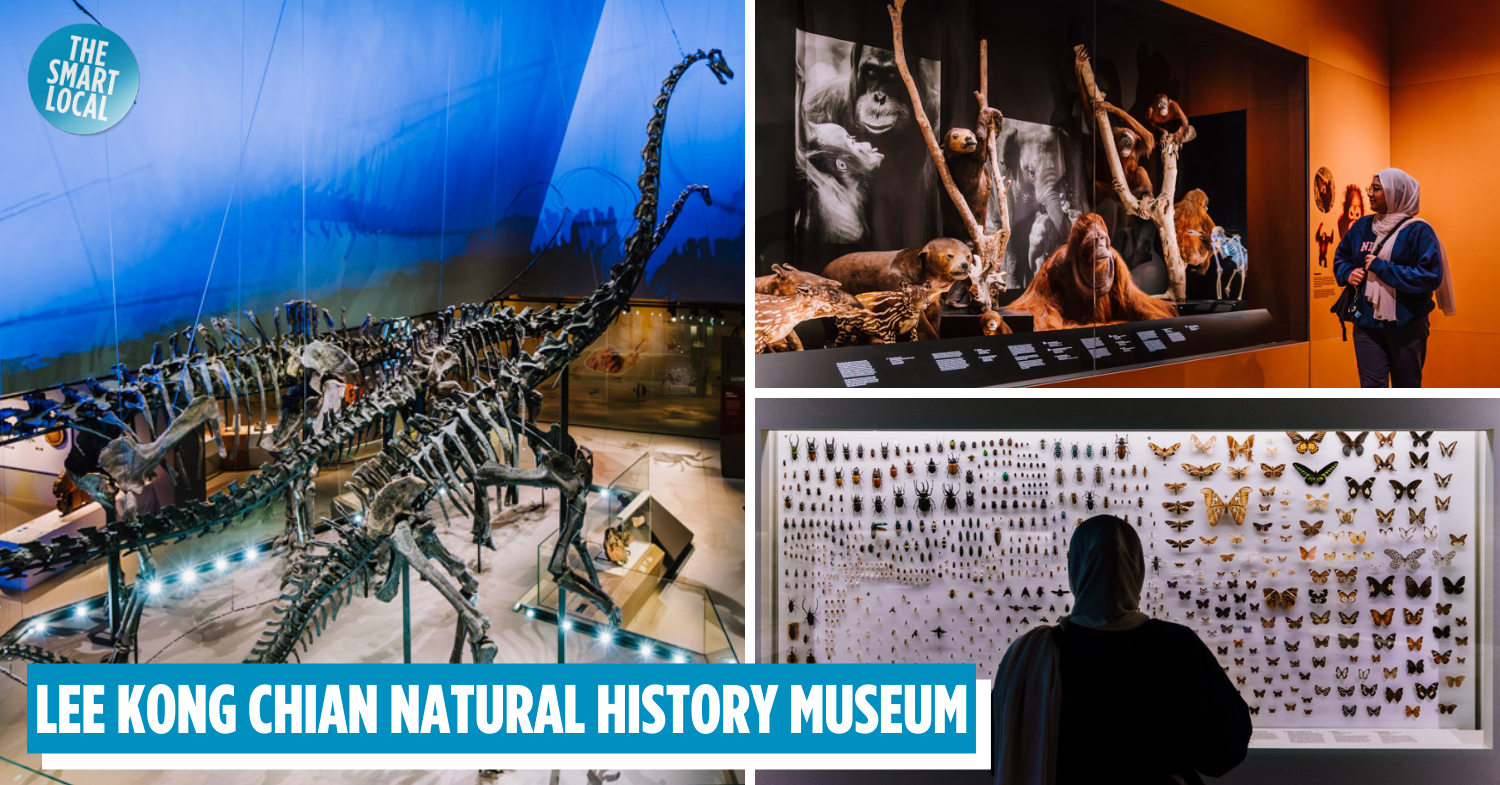
 Sign Up with TSL Connect
Sign Up with TSL Connect




